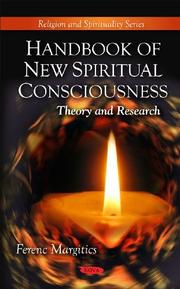Check nearby libraries
Buy this book

Book Description:
Religion and spirituality are the part of the life of a great many people, a value that plays an important role in, among others, leading a healthy life and preserving their health. In the past fifteen or twenty years there has been considerable research into the effects of religion and spirituality on people’s physical and mental health. Today, the polarization of two concepts is observable: religion represents everything that comes from the outside, it is formal and institutional, whereas spirituality represents everything that is subjective, personal, emotional, comes from the inside and is not systematic.
Eckhart Tolle draws our attention to another approach to spirituality. In his opinion, our present consciousness opens up the gate to spirituality. The individual must experience the present moment, while the alertness of his/her consciousness enables the person to view his or her own thoughts, emotions and reactions triggered by the stimuli of the environment. The Presence thus created (conscious alertness) brings about the sense of tranquility and internal peace. The sustained conscious attention launches the spiritual process of transubstatiation that leads the individual to a new spiritual consciousness, new perspective and new ways of observations. This process, by transforming the consciousness of the person, changes the entire personality of the individual.
The author makes an effort to approach this process with the means of scientific research. Following the teachings of Eckhart Tolle, the author created the New Spiritual Consciousness Scale (NSCS) and carried out its statistical analysis. The purpose has been developing a new measuring instrument for the recognition of spiritual consciousness.
It is important to verify the teachings of Eckhar Tolle by academic and scientific methods as well. There are relatively few such research programmes, and I would like to draw attention to some of them.
Following the teachings of Eckhart Tolle, the sciencis created the New Spiritual Consciousness Scale (NSCS) and carried out its statistical analysis. The purpose has been developing a new measuring instrument for the recognition of spiritual consciousness. An attempt has been made to find out whether this new consciousness exists at all, to what extent it is present in the population concerned (college students).
The psychometric survey with the New Spiritual Consciousness Scale was conducted with a sample of 400 college students. As part of the survey, three dimensions of the new spiritual consciousness were revealed:
• ”Ego-Dyastole” (reduction in the functions of Ego)
• ”Alert Consciousness in the Present”
• ”Transcending the Functions of Ego”
The measuring instrument thus created was used to seek an answer to the question as to whether the New Spiritual Consciousness was present among college students, and whether there was any difference between the two genders in this respect. 854 students were involved in the survey.
His initial research hypotheses were the following:
1. The new spiritual consciousness is now observable among college students
2. There is no difference between the genders in terms of the new spiritual consciousness
His research has verified research hypothesis, that is, New Spiritual Consciousness is present among college students.
Among college students, the ”Alert consciousness in the present” dimension of the New Spiritual Consciousness had the highest prevalence. Within that dimension, the sense of an ”inner body” (an internal vividness behind the external body) was the most common. 14,4% of the students experience this feeling several times a day, 13,1% of them at least once a day.
The second most common dimension of New Spiritual Consciousness was ”Ego-dyastole.” Within that, the reduction of the desire to possess things was particularly conspicuous. 9,8% of the students rarely, 3,3% of them never or almost never experienced the longing for something more.
The prevalence of ”Transcending the functions of Ego” was the least common among the components of the New Spiritual Consciousness. Within that dimension, transcending thinking and emotions were the most frequent patterns of behaviour. 3,3% of the students experience this impression daily, 2% several times a day. 2,6% of the students have the impression that their thoughts and emotions constitute only a small fragment of their real personalities, and 0,7% of them encounter this feeling several times a day.
It was also possible to verify second hypothesis, in which we assumed that there were no major differences in the prevalence of New Spiritual Consciousness between the two genders.
Check nearby libraries
Buy this book

Subjects
Methodology, Research, Religious Psychology, Religion, Consciousness, SpiritualityPeople
Eckhart Tolle (1948-)| Edition | Availability |
|---|---|
|
1
Handbook of new spiritual consciousness theory and research
2009, Nova Science Publishers,Inc.
in English
1608760049 9781608760046
|
aaaa
Libraries near you:
WorldCat
|
Book Details
Table of Contents
Edition Notes
Includes bibliographical references and index.
Classifications
The Physical Object
ID Numbers
Community Reviews (0)
Feedback?| August 8, 2010 | Edited by Paul Shaw | Added new cover |
| August 8, 2010 | Edited by Paul Shaw | very good book! |
| April 20, 2010 | Edited by WorkBot | update details |
| January 29, 2010 | Edited by WorkBot | add more information to works |
| December 11, 2009 | Created by WorkBot | add works page |










